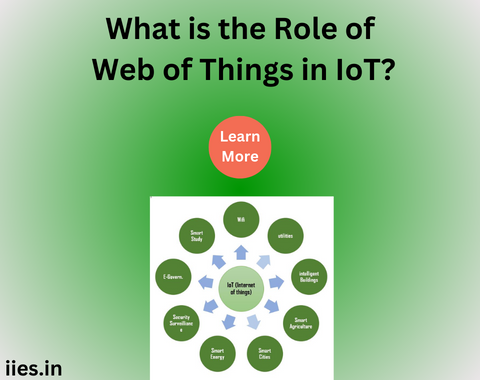
In the ever-evolving landscape of technology, the Internet of Things (IoT) has emerged as a transformative force, seamlessly integrating the physical and digital realms. As we navigate through the interconnected web of devices, sensors, and systems, a new paradigm is on the horizon—the Web of Things (WoT). This article delves into the concept of the Web of Things, exploring its significance, applications, and the potential it holds for shaping a smarter and more interconnected future.
The Web of Things, often abbreviated as WoT, is an extension of the Internet of Things that aims to standardize the way devices and services interact with each other. At its core, WoT envisions a web where not only humans but also things are active participants, communicating and collaborating seamlessly across diverse platforms. Unlike traditional IoT frameworks, WoT is designed to provide a unified and standardized approach to device communication, making it easier for devices to understand and interact with each other.
1. Thing Description:
Central to the Web of Things is the concept of “Thing Description,” which serves as a standardized metadata description for devices and services. Thing Descriptions provide essential information about the capabilities, properties, and interactions of a device, enabling other devices or applications to understand and utilize them effectively.
2. Scripting API:
The Scripting API in WoT allows developers to create scripts that define the behavior of things, facilitating a standardized way to control and interact with devices. This API abstracts the underlying complexities of device communication, making it more accessible for developers to create applications that can seamlessly interact with a diverse range of devices.
3. WoT Servient:
A fundamental concept in the Web of Things is the “Servient,” which refers to entities that can act as both a client and a server. These entities could be devices, services, or applications capable of consuming and providing WoT-enabled interactions. WoT Servients play a crucial role in realizing the vision of a truly interoperable and decentralized web of devices.
1. Smart Homes and Cities:
The Web of Things holds immense potential in the realm of smart homes and cities. Imagine a scenario where your smart thermostat communicates seamlessly with your smart blinds to optimize energy efficiency or where streetlights adjust their brightness based on real-time traffic conditions. The WoT framework can make such interconnected systems a reality, enhancing both convenience and sustainability.
2. Industrial IoT (IIoT):
In industrial settings, the Web of Things can revolutionize the way machines and sensors communicate. Standardized interactions facilitated by WoT can lead to more efficient manufacturing processes, predictive maintenance, and improved overall operational performance. This interoperability can result in cost savings, reduced downtime, and increased productivity for industries embracing the WoT paradigm.
3. Healthcare:
The healthcare sector stands to benefit significantly from the Web of Things. Imagine wearable devices seamlessly sharing health data with medical professionals, and smart healthcare systems adjusting treatment plans based on real-time patient information. The WoT framework can enhance the connectivity and interoperability of medical devices, leading to more personalized and efficient healthcare services.
While the Web of Things promises a multitude of benefits, it also faces challenges that must be addressed for widespread adoption. Security and privacy concerns, standardization across diverse industries, and the need for robust protocols are among the challenges that need careful consideration. As the WoT ecosystem continues to evolve, collaborative efforts from industry stakeholders, policymakers, and researchers are essential to overcome these hurdles.
Future Outlook:
The future of the Web of Things is bright, with ongoing research and development shaping its trajectory. As more devices become WoT-enabled, the potential for innovation and collaboration across industries grows exponentially. Standardization efforts, open-source initiatives, and the integration of WoT into existing IoT frameworks will play a pivotal role in realizing the full potential of this interconnected web.
Overcoming Challenges:
The journey toward a fully-realized Web of Things is not without its challenges. Security and privacy remain paramount concerns, with the interconnected nature of devices creating potential vulnerabilities. Standardization efforts, while crucial, require collaboration across industries with varying technical requirements. Robust authentication mechanisms and encryption protocols are vital to ensure the integrity of data exchanged within the WoT framework. As the ecosystem matures, addressing these challenges will be pivotal in establishing trust and confidence among users and stakeholders.
Interoperability and Standardization:
One of the key strengths of the Web of Things lies in its emphasis on interoperability. Standardization efforts, led by organizations such as the World Wide Web Consortium (W3C), are paving the way for a common language that devices can speak. This ensures that devices from different manufacturers can seamlessly communicate, fostering a more open and collaborative ecosystem. The adoption of WoT standards by industry players is crucial for achieving a truly interoperable and user-friendly web of devices.
Integration with Edge Computing:
The rise of edge computing is intricately linked with the evolution of the Web of Things. The WoT framework aligns seamlessly with edge computing principles, allowing devices to communicate and make intelligent decisions locally. This integration not only enhances the efficiency of IoT systems but also contributes to the scalability and responsiveness of the interconnected web.
The Web of Things represents a paradigm shift in the way devices and services interact, opening up new possibilities for innovation and connectivity. As we move towards a more interconnected future, the WoT framework provides a standardized approach to device communication, making it easier for diverse devices to collaborate and share information. From smart homes to industrial settings and healthcare, the applications of the Web of Things are vast, promising a future where the digital and physical worlds seamlessly converge for the benefit of society as a whole.
Indian Institute of Embedded Systems – IIES